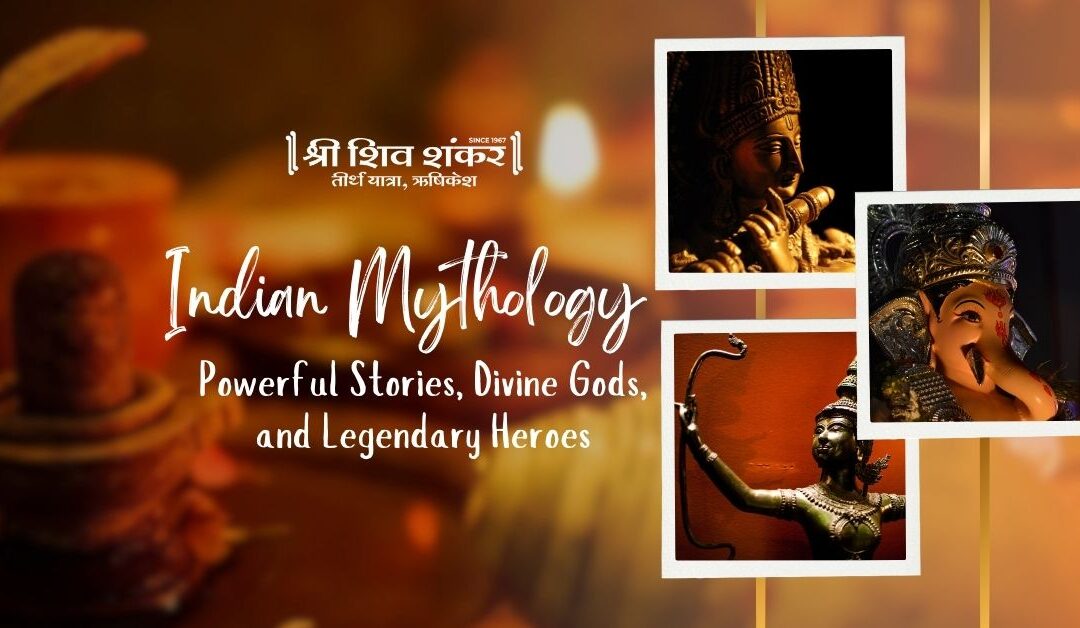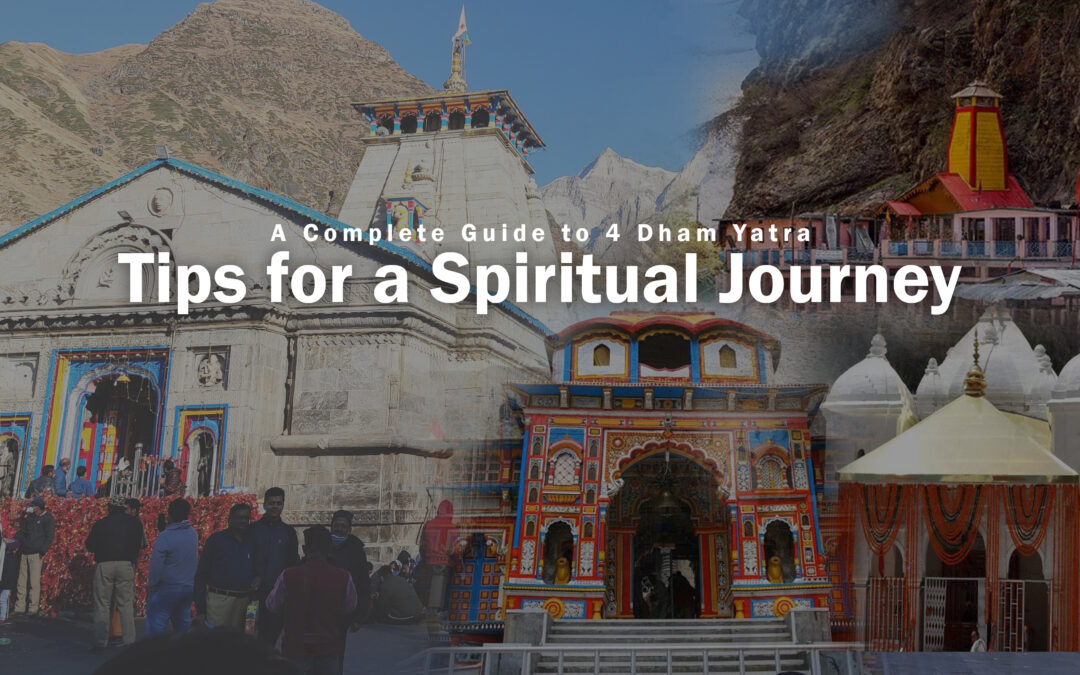All You Need To Know About 12 Jyotirlingas Of Shiva And Why They Are Worshipped?

Lingam- The Creator Of Universe
In Hinduism Shiva is deemed to be the generative force of the entirety of presence, all inventiveness, and fruitfulness at each infinite level. The lingam of the Shaivism custom is a short round and hollow oval structure, made of stone, metal, clay, wood, gem, or dispensable material. Ancient Sanskrit texts such as the Mahabharata and the Puranas recount tales that distinguish the lingam as the phallus of Shiva. The 12 Jyotirlingas Of Shiva are considered sacred manifestations of this divine force. Studying Hindus deem the lingam and yoni together to symbolize the connection of the male and female principles and the oneness of all existence.
As per the Linga Purana, the lingam is a complete emblematic depiction of the undefined Universe Bearer – the oval-molded stone is the image of the Universe, and the base speaks to the Supreme Power that holds the whole Universe in it. The Jyotirlingas of Shiva are considered to represent this divine cosmic energy. A comparative understanding is additionally found in the Skanda Purana: “The interminable sky (that extraordinary void which contains the whole universe) is the Linga, the Earth is its base. Toward the finish of time the whole universe and all the Gods, at last, amalgamated in the Linga itself.
What Linga Indicates?
Lingam indicates recognizable proof, an image through which you can distinguish what the actuality is. What isn’t obvious, yet can be distinguished – that is the lingam. At a time, when an infant is conceived, how would you know whether the infant is male or female? Just through the regenerative organ would you be able to distinguish whether the infant is a male or a female? This is the reason for calling the reproduction system linga.
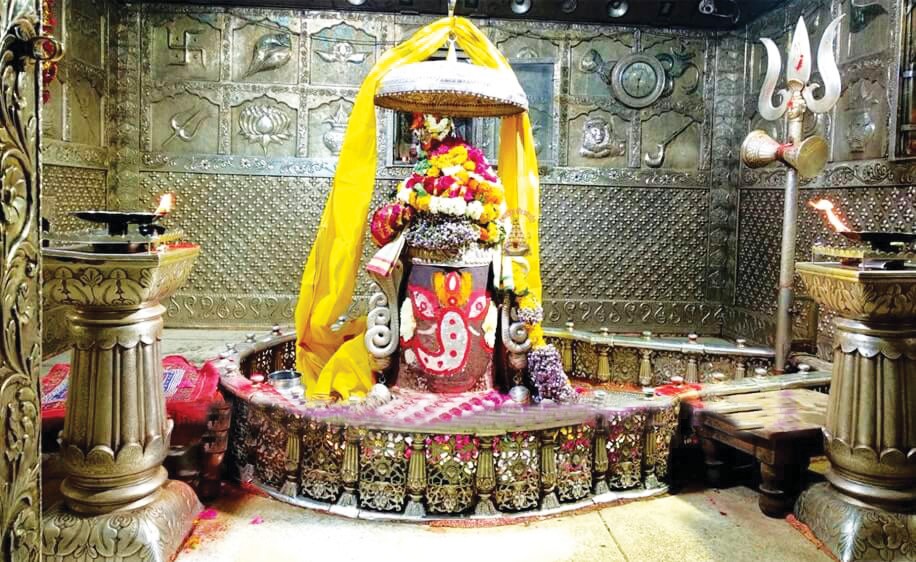
So also, how would you recognize the Lord of this Creation? The sign by which you recognize both the male and female structures, consolidating them to shape one single image to know the Lord in this Creation is Shivalinga. It is an image of the generative force.
Why Do People Worship The Shivalinga?
Devotions of Shivalinga are viewed as the top worship and priority for the devotees of Lord shiva. Love of every single other structure is viewed as optional or secondary. The importance of the Shivalinga is that It is the shining light (fire) type of the Supreme – cemented to make the worship of It simpler. It speaks to the genuine idea of God – shapeless basically and accepting different structures as It wills.
Lovers accept that the Shivalinga causes them to concentrate and go past their cognizance – and that is the reason they were kept in Shiva sanctuaries. It is likewise loved as the creator of the universe.
The Jyotirlingas of Shiva are considered the most sacred Shivalingas, with millions of devotees visiting them every year to offer their worship. The 12 Jyotirlingas are a devotional representation of Lord Shiva. “Jyoti” signifies ‘light,’ and “linga” signifies ‘mark,’ so a Jyotirlinga means the “Radiant mark or emblem of Lord Shiva.”
There are 12 Jyotirlingas of Shiva (Mentioned below with the famous shrines’ locations)-
1. Somnath Jyotirlinga – Prabhas Patan, near Veraval, Sourashtra, Gujarat
2. Mallikarjuna Jyotirlinga – Shri Shailya, Andhra Pradesh
3. Mahakaleshwar Jyotirlinga – Ujjain, Madhya Pradesh
4. Omkareshwar Jyotirlinga – Omkar, Mandhata, Madhya Pradesh
5. Kedarnath Jyotirlinga – Himalayas
6. Bhimashankar Jyotirlinga – Dakini region, Taluka Khed, District Pune, Maharashtra
7. Vishveshwar/Vishwanath Jyotirlinga – Varanasi, Uttar Pradesh
8. Triambakeshwar Jyotirlinga – Near Nashik, Maharashtra
9. Vaidyanath Jyotirlinga – Parli, District Beed, Maharashtra, and Baidyanathdham, Jharkhand
10. Nageshwar Jyotirlinga – Dwarka and Almora, Uttar Pradesh,
11. Rameshwaram Jyotirlinga – Setubandh, near Kanyakumari, Tamil Nadu
12. Ghrishneshwar Jyotirlinga – Verul, District Aurangabad, Maharashtra
Sanskrit shloka that list the 12 Jyotirlingas:
सौराष्ट्रे सोमनाथं च श्रीशैले मल्लिकार्जुनम्।
उज्जयिन्यां महाकालमोङ्कारममलेश्वरम्॥
परल्यां वैद्यनाथं च डाकिन्यां भीमशङ्करम्।
सेतुबन्धे तु रामेशं नागेशं दारुकावने॥
वाराणस्यां तु विश्वेशं त्र्यम्बकं गौतमीतटे।
हिमालये तु केदारं घुश्मेशं च शिवालये॥
एतानि ज्योतिर्लिङ्गानि सायं प्रातः पठेन्नरः।
सप्तजन्मकृतं पापं स्मरणेन विनश्यति॥
(English Translation)
“Saurashtre Somanathamcha Srisaile Mallikarjunam|
Ujjayinya Mahakalam Omkaramamaleswaram ||
Paralyam Vaidyanathancha Dakinyam Bheema Shankaram |
Setu Bandhethu Ramesam, Nagesam Darukavane||
Varanasyantu Vishwesam Tryambakam Gautameethate|
Himalayetu Kedaaram, Ghrishnesamcha shivaalaye||
Etani jyotirlingani, Saayam Praatah Patennarah|
Sapta Janma Kritam pApam, Smaranena Vinashyati||”
Chronicles of 12 Jyotirlingas Of Shiva
1. Somnath, Jyotirlinga:
Decimated and re-assembled sixteen times, It is accepted that even today on a moonless night Chandra comes and plunges in the blessed water of the ocean here and begins to sparkle once again. Somnath is called Somnath Mahadev in light of the fact that legend says Moon appealed to Lord Shiva himself and set up this Jyotirlinga without anyone else and thus gets the name. Soma means Moon. Clearly, the moon was coupled to around 27 daughters of Daksha. Yet, he didn’t focus on the entirety of his 27 brides, however dedicated his time just to Rohini.
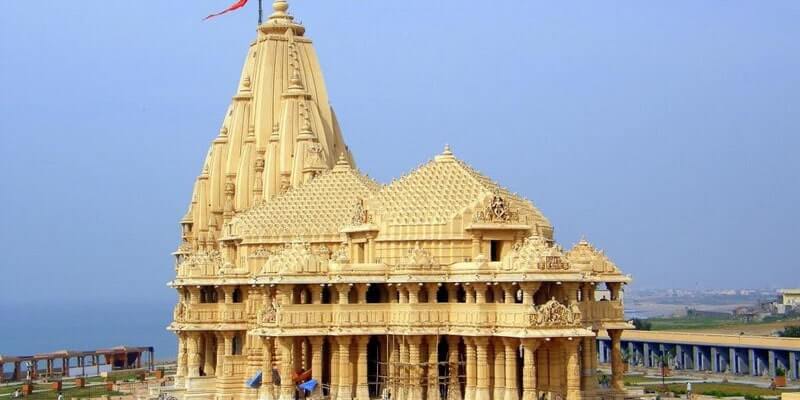
The father gets irritated and denounces Moon that he will lose all his gloss and shine, and fade away. The moon begins to blur thus he comes down to this spot alongside Rohini and starts appealing to Lord Shiva. Daksha is additionally the father in law of Lord Shiva. Shiva at that point expels his revile, Moon takes a dunk in the river Saraswati and begins to shine. Subsequently, this spot gets the name Prabhas, which means shine or sparkle. The absolute first Somnath sanctuary is supposed to be built by the moon and it was all gold.
2. Mallikarjuna Jyotirlinga:
It is the specific area where Shiva and Parvati visited their child Kartik, living there out of shame that he failed his parent’s test.
The second Jyotirlingas Of Shiva on the list is Mallikarjuna that is established in Andhra Pradesh. According to Skanda Purana, Shiva and Parvati were not able to choose which son of theirs should get mated first. So they decided to plot a competition between both their sons, Ganesha and Kartikeya. The one who would be apt to do this first will get married first.
Lord Kartikeya took his peacock and started the voyage but Ganesh chose to go round his parents and stated that they are his world. Shiva and Parvati were very charmed with this so they decided to make Lord Ganesha mated first. And he got married to Riddhi and Siddhi, the daughters of Viswaroopan.
3. Mahakaleshwar Jyotirlinga:
The third Jyotirlingas Of Shiva is the exceptionally mainstream Mahakaleshwar in Ujjain. It is an exceptionally sacrosanct spot and is located on the bank of Rudra Sagar.
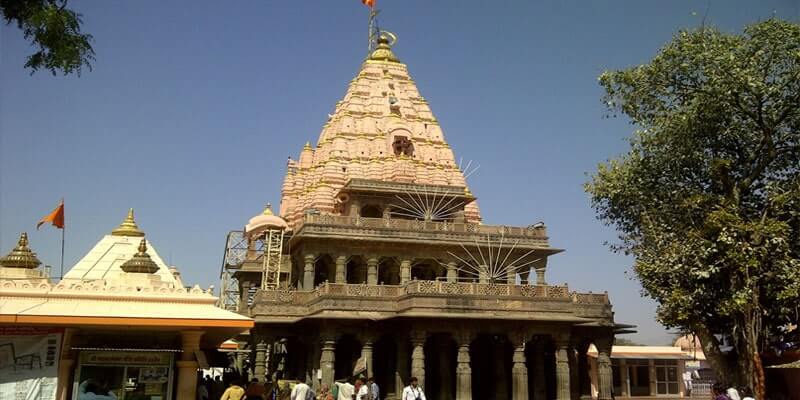
This piece of the nation was once managed by a ruler named Chandrasena, who was a big devotee of Lord Shiva. The people would likewise consistently worship the Lord. One day the realm was invaded by lord Ripudamana who had an evil spirit with him named Dushan. This evil presence got an extraordinary capacity it could get invisible.
The Kingdom was destroyed and all the individuals prayed to Lord Shiva. Lord Shiva appeared up and ensured the city. The individuals of Ujjain mentioned him to remain there itself and secure them. Shiva couldn’t state NO and chose to remain in Ujjain to take care of his devotees. It is accepted that Lord Shiva still lives in Mahakaleshwar.
4. Omkareshwar Jyotirlinga:
There are many stories that spin around this shrine. Faiths say Lord Shiva had emerged here to conquer the danavas on the request of the gods.
Some state he had shown up here on solicitation of mount Vindya and favored him that he would turn into a strong mountain except if he quits influencing Lord Shiva’s devotees. Some state that ruler Mandhata used to worship Lord Shiva here. Lord Shiva was so satisfied with him that he chose to dwell here.
5. Kedarnath Jyotirlinga:
It is accepted to be established by the Pandavas, at the specific area where they saw Lord Shiva and were blessed by him and free of their transgressions.
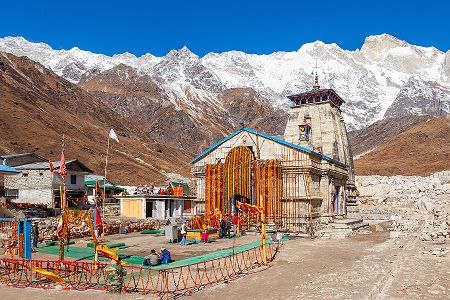
Pandavas needed to dispose of their sins with the goal that they could go to Swarg (heaven). Notwithstanding, they were informed that they could do so just on the off chance that they could see Lord Shiva and be blessed by him. So they began their hunt. After a long pursuit, they at long last saw Lord Shiva at this spot where the Jyotirlinga is built today.
The Lord said that he would remain in this spot as a three-sided molded Jyotirlinga. This is one of the most well-known Jyotirlingas Of Shiva in India and is additionally a sacred spot. Consistently a colossal number of devotees visit this Kedarnath Temple every year.
6. Bhimashankar Jyotirlinga:
Here experienced an Asura named Bhima. At the point when he grew a little old, he was told by his mother, karkati that Kumbhakaran the sibling of King Ravana was his father. His mother additionally disclosed to him that his father was slaughtered by Lord Vishnu in one of his incarnations (Lord Rama). Bhima concluded he would take revenge for the demise of his father.
He began to implore Lord Brahma and was allowed gigantic powers from him. After getting powers from lord Brahama, he began devastation. There was carnage everywhere. He would torment holy people and even murder children. He once took Kamarupeshwar a major Shiva devotee as a hostage. The Lord got exceptionally displeased with this. The displeasure even expanded when Bhima advised Kamarupeshwar to love him and not Lord Shiva. Kamarupeshwar denied this, and thus Bhima raised his sword to kill him.
This is when Lord Shiva appeared to rescue Kamarupeshwar and murdered Bhima. All the divine Gods requested Lord Shiva to remain in their thus agreeing to them, Shiva showed himself as the Bheemashankar Jyotirlinga.
7. Vishwanath Jyotirlinga:
Followers state this city can never be pulverized. It is where Brahma, Vishnu, and Mahesh, trinity live simultaneously. Anybody can achieve Moksha here. There is no transgression or sin on earth that can’t be washed here. It also has a fascinating story. The interpretation implies the “Ruler of the universe”. The city is the most established on the planet and has a 3,000 fife multi-year old history. It is said that this city can never be demolished.
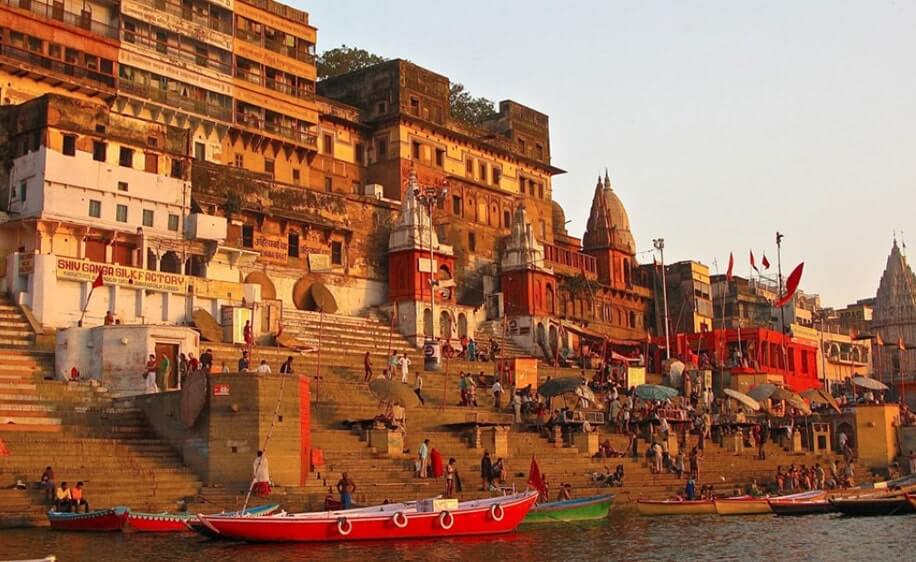
8. Triambakeshwar Jyotirlinga:
The legends state that Gautam rishi used to live here with his better half Ahilya. Lord Shiva blesses Gautam Rishi with a pit from where he could get any measure of grain and food. The other Rishi got envious of Gautam Rishi. He decided to send animals there and murder him. Gautam Rishi got extremely annoyed with this and he appealed to Lord Shiva that he needs the Ganges to stream in this segment of the country so his transgressions are washed off. Lord Shiva allowed his desire. The Lord chose to remain here by the name of Trimbakeshwar. It is said that it can satisfy all wants.
9. Vaidyanath Jyotirlinga:
Devotees convey ‘Kanwars’ on their shoulders and complete their trip here.
Ravana the ruler of Lanka was an immense devotee of ruler Shiva. He once felt that in the event that Shiva doesn’t dwell in Lanka, at that point Lanka can be annihilated. He needed to make Lanka immune. Ruler Shiva consented to his appeals and gave him a Shivalinga. However, Shiva cautioned him that if he placed the Shivalinga on any part of the earth before reaching Lanka, it would become fixed to that land, and no one would be able to remove it.
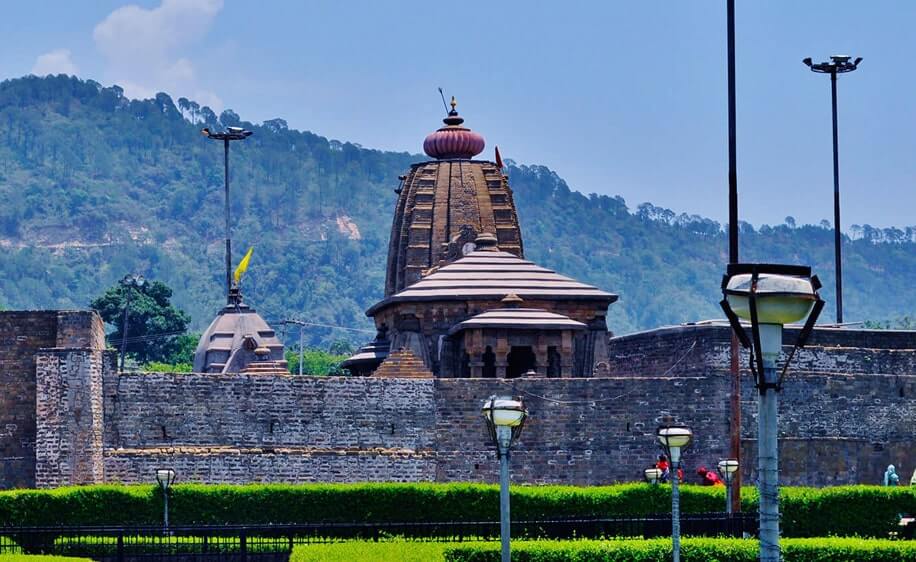
Ravana began his journey back from Kailash. In transit it was night and he needed to do his night prayer. In any case, he was unable to do it with the Jyotirlinga in his grasp.
He saw a shepherd kid and asked him to hold the Jyotirlinga and furthermore cautioned him not to put it down. The kid concurred yet cautioned him that if there is a delay from him he will put it down and go. Ravana said he will be back soon. The shepherd kid was actually lord Ganesh and he was there at the request of God. When there was a delay from Ravana, Ganesha kept the Jyotirlinga on the ground and he left.
When Ravana saw this he turned out to be extremely disturbed however notwithstanding making a decent attempt, he was unable to pull it from the ground. From that point forward it is present in there Vaidyanath Jyotirlinga is one of the most famous Jyotirlingas Of Shiva.
10. Nageshwar Jyotirlinga:
It is said that there was a Shiva devotee named Supriya who lived around here. She was once attacked and spellbound by an evil spirit named Daaruka. At the point when she began to call Lord Shiva, He showed up and executed Daaruka. After this occurrence, He lived here as Nageshwar Jyotirlinga.
11. Rameshwaram Jyotirlinga:
Rameshwaram Jyotirlinga is the eleventh jyotirlinga among the 12 Jyotirlingas Of Shiva located in Tamil Nadu. It is one of the Char Dham. There are two links here. One was brought by Hanuman from Kailash and the other by Sita. The Vishwalinga is prayed first as it was brought by Hanuman. The one brought by Sita is venerated second. The equivalent is done even today. This is actually where Lord Rama worshipped Lord Shiva after he conquered Ravana.
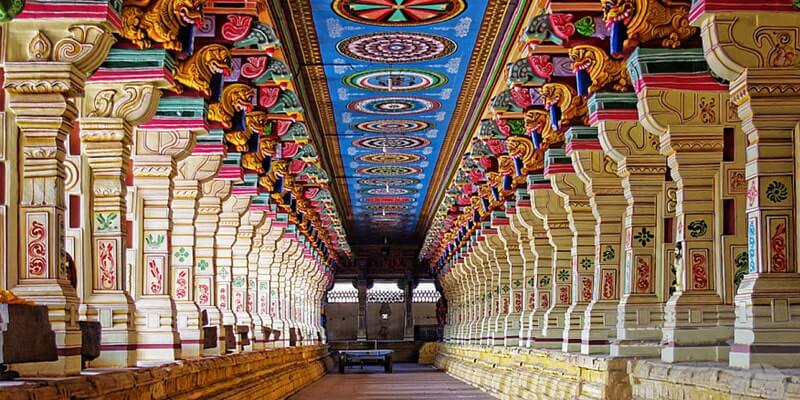
The Rameshwaram Jyotirlinga is known for its special design and architecture. The structure has the biggest passing when contrasted with some other sanctuaries in India. Rameshwaram Jyotirlinga viewed as one of the biggest sanctified spots by the Hindus. Many visit Rameshwaram Temple each year.
12. Ghrishneshwar Jyotirlinga:
The Ghrishneshwar Jyotirlinga is one of the Jyotirlingas Of Shiva referenced in the Shiva Puranas. The 12 Jyotirlingas is the Grishneshwar or GHUSHMESHWAR Jyotirlinga in Maharashtra.
The jyotirlinga was believed found near the Ajanta and Ellora caves in Aurangabad. Numerous years prior a lady named Kusuma used to live here. She used to immerse the Shivalinga in a tank and then worship it. She used to immerse the shiva linga in a tank and afterwards worshipped it. The locals would regard her a lot and go to her for guidance. Her better half’s other spouses were extremely envious of her so they killed her child.
Even after her child’s passing too she proceeded with her customs. One day, while she submerged the Shivlinga in the tank. Lord Shiva appeared up alongside her child. By looking at the scene, the locals were astounded. From that point forward it is said that Lord Shiva lives here.
Conclusion
Shiv Shankar Tirth Yatra is a well-known tour and travel company that conducts pilgrimages throughout India, focusing on spiritual journeys to sacred sites like the Shivalinga and the Jyotirlingas of Shiva. Our tours are thoughtfully organized, offering explorers quality food, Satsang programs, medical assistance, and complete information about the places they visit, including the 12 Jyotirlingas, which hold immense spiritual significance.
We take special care of senior citizens, with a dedicated team of attendants to address any issues they may face. Additionally, we arrange food facilities during travel and provide transportation for explorers to visit nearby holy sites. For the last 44 years, we have served people, sending over 2 lakh devotees to several sacred destinations across India, including those dedicated to the Jyotirlingas of Shiva.
For more information and to book your Mathura tour,
You can contact Shiv Shankar Tirth Yatra at +91-9412050868 / +91-135-2436468
Or can mail your queries to shivstyc@gmail.com. Happy Journey!
Do you have any questions?
Feel free to give us a call. We have a team of experts ready to answer all your queries. Thank you.
Popular Posts
Popular Categories

